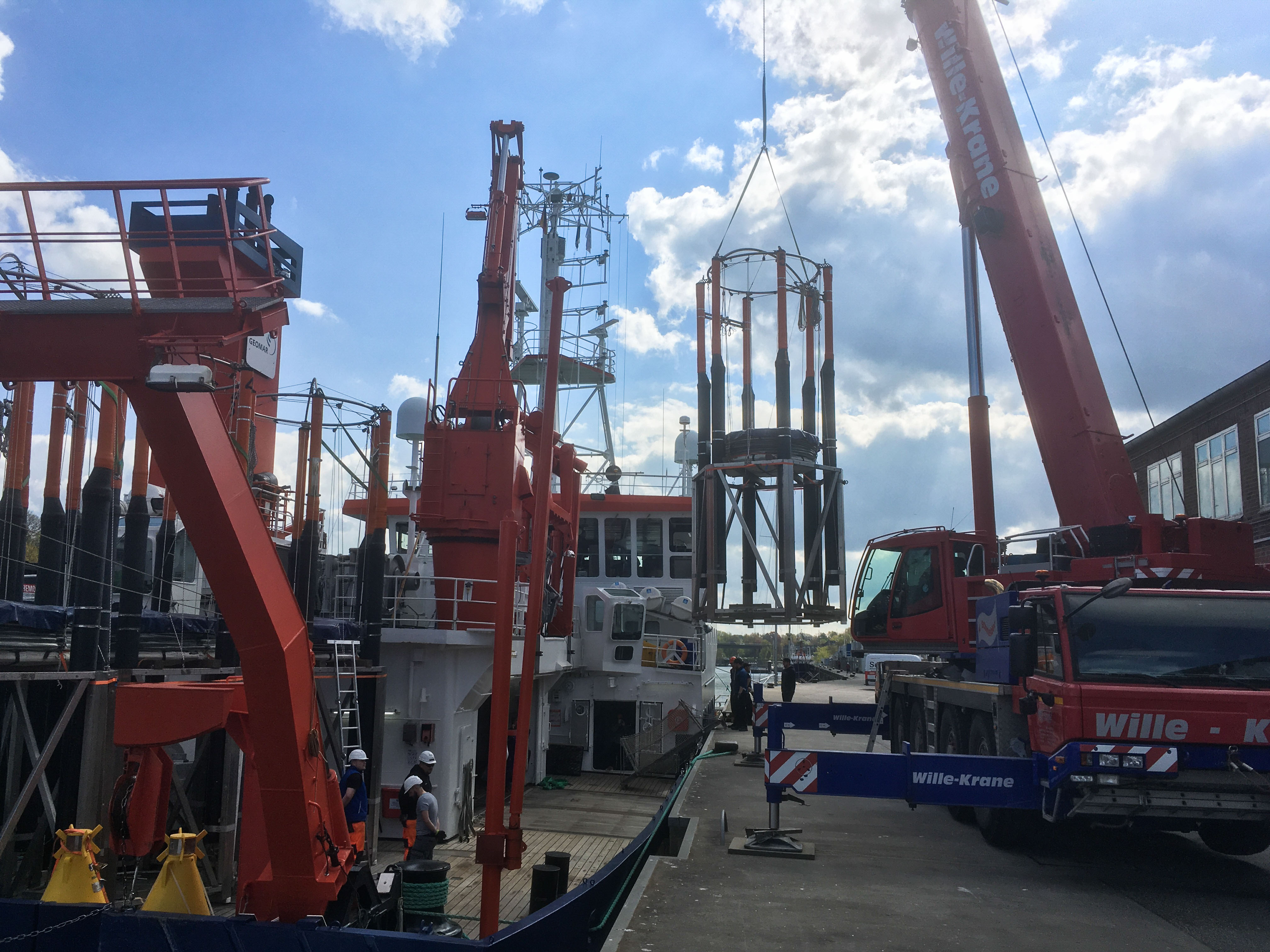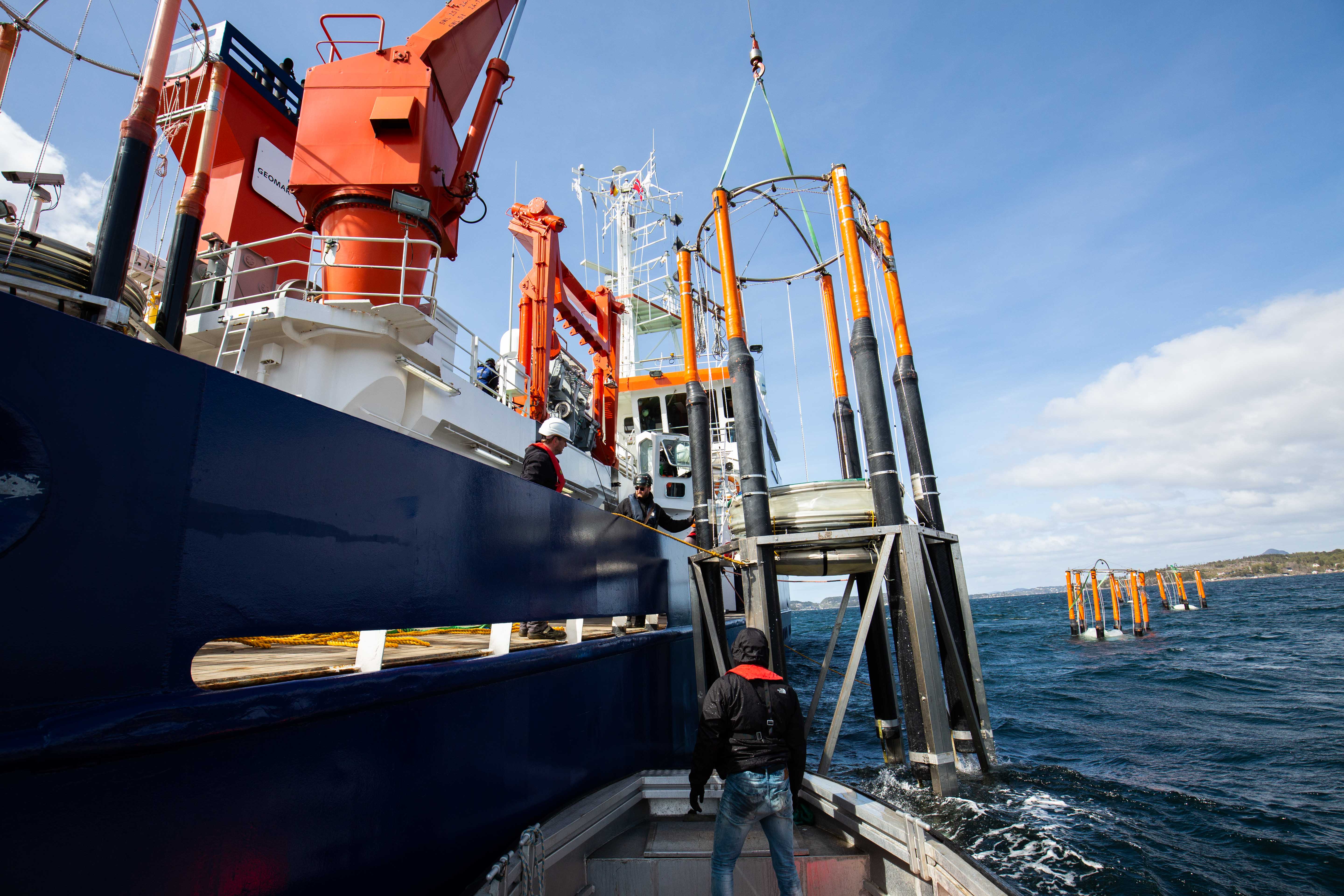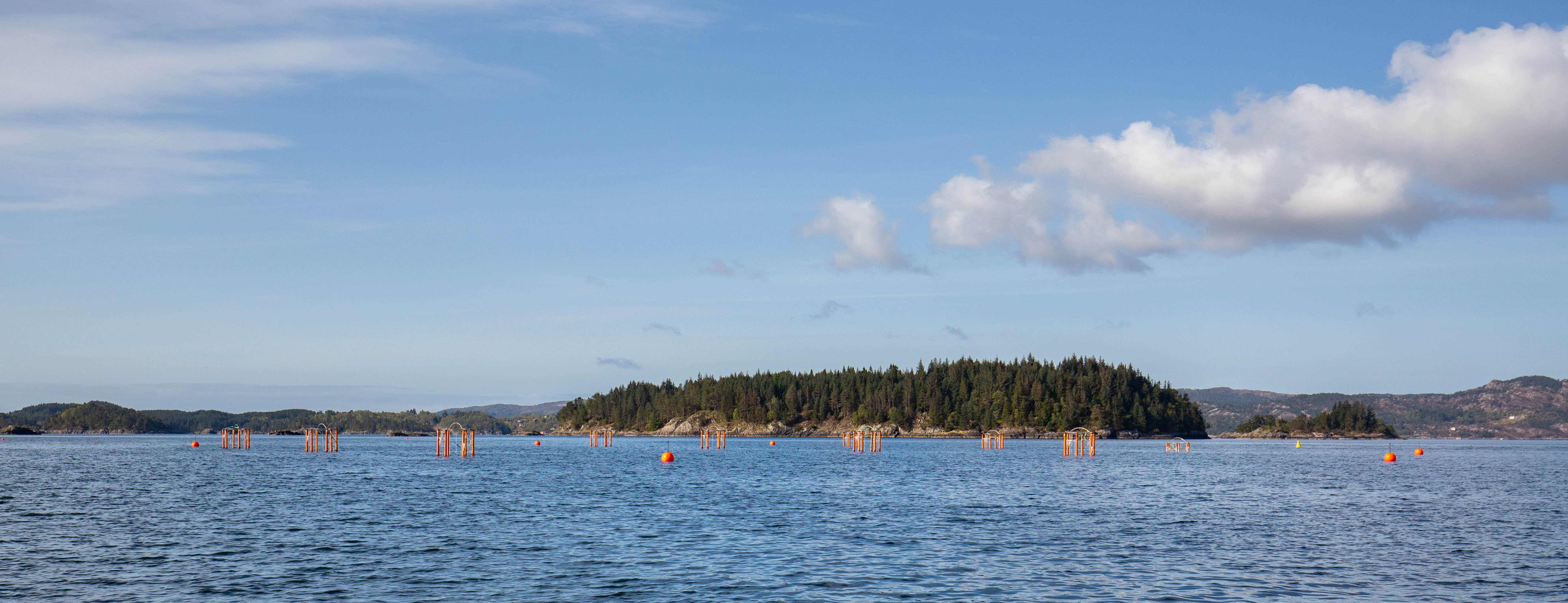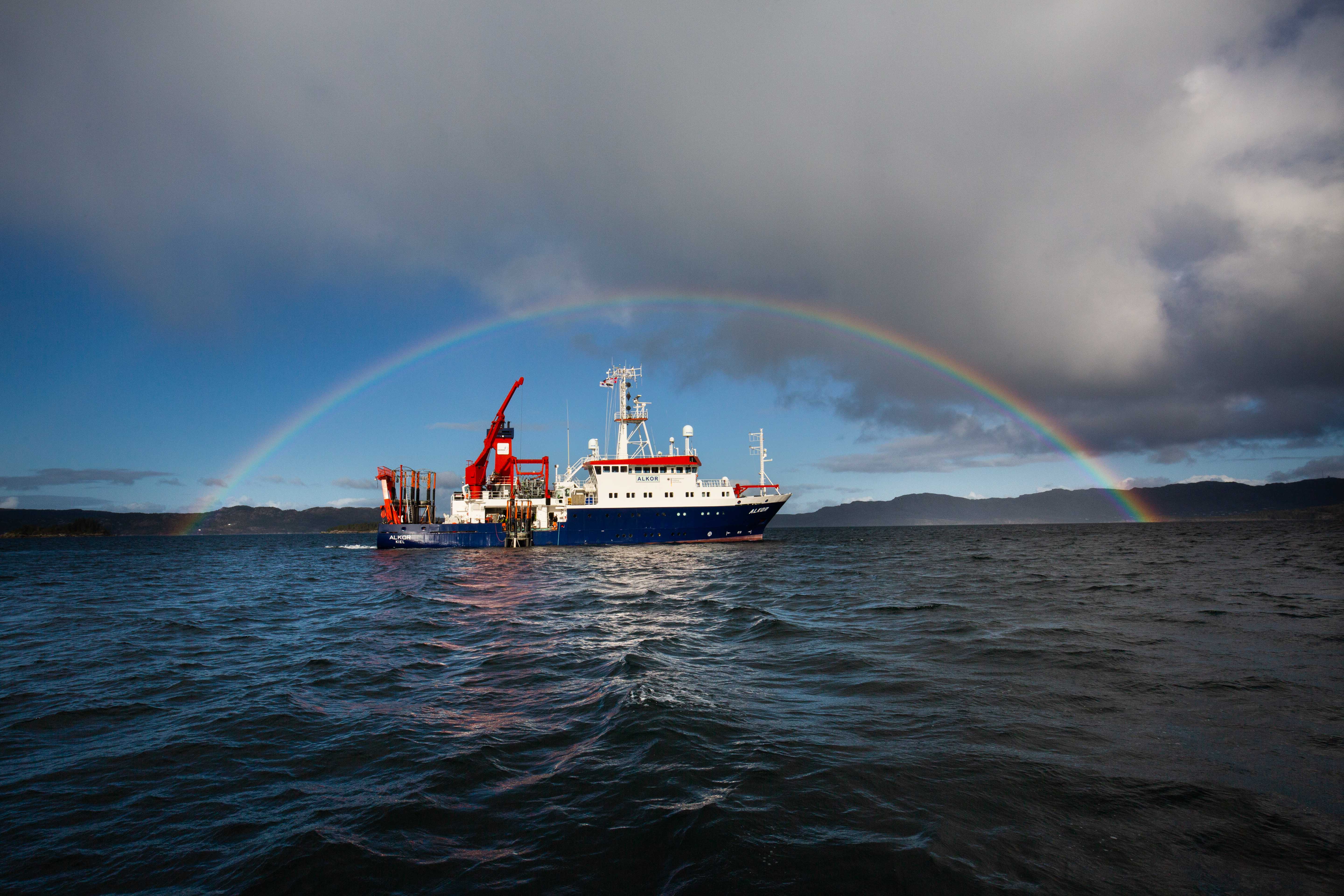Author & Pictures: Michael Sswat
“We are going for another mesocosm experiment”, this sounds quite familiar, and by now, friends and family just ask “where and how long will you go?”.
This time, me and my colleauges went to Bergen in Norway for 3 months to study ocean alkalinity enhancement, a potential method to remove carbon dioxide from the atmosphere, in mesocosms hosting a natural plankton community.
I am still excited about these “big adventures” and at the same time it became common practice. But I always forget how much work it is to set everything up for a KOSMOS mesocosm study, especially in the beginning – maybe it´s a rare form of “historical amnesia”, which I may call “mesocosmic amnesia”.
I cannot tell you in detail, how our technical team prepared the mesocosms for this study already over a year in advance – ordering hundreds of meters of lines, dozens of shekels and thousands of screws. Then putting everything together, like a big puzzle: metal frames, buoyancy bodies and the bags made of translucent plastic foil.
I usually just see the result, 10 “new” mesocosms, waiting on the GEOMAR pier in Kiel for the next experiment.
On May 2nd, the “MS Alkor” was finally loaded with the mesocosms and part of our equipment, heading for Bergen Harbor.

Alkor arrived in Bergen after a 2-days journey through the Baltic and North Sea and was greeted by perfect sunshine – rather untypical weather for the “European capital of rain”.
Only two days later, on May 7th, conditions were as expected beforehand – rain from the side – just in time, as Alkor went to the designated area in the Raunefjord, off the Espegrend Research Station, in the vicinity of Bergen airport to deploy the mesocosms.
However, when we arrived, the sun pushed through every now and then and set the stage for a perfect rainbow when the first mesocosm touched water – I hope this was a good omen!

The mesocosms were arranged in 3 rows, each row contains 3 or 4 mesocosms connected by lines and attached on each end to a mooring, an anchor with 2 heavy train wheels, which is put on the ocean floor at 100m depth.
At this stage, the heart of the mesocosms, the 20m long bags, are still folded safely within the flotation frames and are only lowered slowly when everything is neatly set up.
By lowering the bags, they enclose the Fjord water including the natural community of organisms living within. And, to get the water columns of the mesocosms as similar as possible, the upper and lower parts of the bag remain open for some days, to allow for exchange with the surrounding water masses.
Just when the lower part is closed with the cone-shaped sediment trap and the upper part of the bag is pulled above the water surface, the water inside the mesocosm bags is fully isolated from the surrounding Fjord water. This marks the start of the experiment and for this it needs a lot of diving, which will be described in another post.

